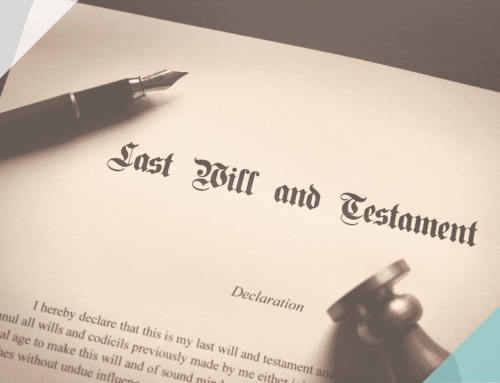HMRC this week published their much anticipated Social Care Compliance Scheme Employer Guide.
This social care guide builds upon the previous update from HMRC in August 2018 which was released subsequent to the Court of Appeal’s (‘CA’) judgment on sleep-ins, which ruled that sleep in staff were working only when ‘awake for the purposes of working’, thereby reversing the previous law in this area that care staff could be entitled to the National Minimum Wage/National Living Wage (collectively the ‘NMW’) for hours spent on sleep-in shifts, regardless of whether they were asleep or not.
I myself was vocal in criticising HMRC’s failure back in August 2018 to provide sufficient detail in their update so as to allow providers to proceed correctly in light of the CA decision, not least their statement that providers were to continue with the SCCS but take into account the CA judgment, without providing any further explanation as to how to do so. Accordingly, this latest guidance, although imperfect, is an improvement.
HMRC Social Care New Guidance
The Employer Guide is for use by employers in the social care sector who have been accepted into the Social Care Compliance Guide (SCCS) and is designed to help employers as they conduct their own self-review and calculate any arrears of pay that may be due.
The Employer Guide helpfully discusses the CA judgment and confirms that the way that providers consider the sleeping elements of a social care worker’s arrangement is now different, with the CA identifying that the key issue to consider is whether a worker is “available for work” rather than actually working. The position is different depending on whether the worker is:-
- expected to sleep for all or most of the shift; or
- expected to work for most of the shift.
A worker who is expected to work for most of their shift, but is permitted to sleep between activities, is likely to be working rather than “available for work” whilst asleep. Conversely, a worker who is required to stay at or near their workplace on the basis that they are expected to sleep for most or all of their shift is likely to be “available for work” for periods during which they are expected to sleep (and therefore not entitled to NMW for any hours where they are not awake for the purposes of working).
In short, any time a worker is not working but is:-
- “available for work”; and
- making use of suitable sleep facilities…
…is NOT working time for NMW purposes UNLESS they are awake for the purpose of working. This means that a worker will NOT be working when they are expected to sleep and have suitable sleeping facilities available. HMRC has also provided 3 examples which providers can reference when conducting their SCCS self-review (and determining what is/is not working time), the first of which appears likely to apply to most providers and is as follows:-
‘Example 1
Where an employer requires a worker to be awake for the purposes of working, this time is working time for NMW purposes. This could be, for instance, to conduct a handover, provide scheduled assistance to a service user or client.
Susan is engaged on a sleep-in shift between the hours of 10pm-8am and is provided with suitable sleeping facilities.
From 10pm to 10:30pm, her employer requires her to conduct a handover to a staff member who is conducting a waking night shift.
From 7am to 8am, Susan is required to assist the waking night worker to administer medication to the service user.
At all other times, Susan is expected to sleep using the provided facilities.
The 30 minute handover time and 1 hour taken to administer medication are both working time for NMW purposes.
Between the hours of 10:30pm and 7am she is not actually working for NMW purposes unless she is awake for the purpose of working as she is expected to sleep’.
A further example provided by HMRC sets out the instance where a worker is regularly disturbed throughout most of their shift. Perhaps worryingly, HMRC advises that employers should consider whether in practice it is ‘reasonable’ for the worker to be expected to sleep throughout the shift – surely such a statement will leave far too much open to subjective interpretation and could lend itself to unscrupulous providers taken advantage of sleep-in staff awoken regularly throughout the night?
Has there been any sleep-ins underpayment?
The Employer Guide clearly sets out that providers now only need to consider underpayments of NMW for sleep-in staff for time when workers are ‘awake for the purposes of working’. Where a provider finds that there has been no underpayment of NMW, after including the time spent awake for the purposes of working during sleep-ins shifts in their calculation of working time, then this would be the end of the review process. Nonetheless, providers are still required to inform HMRC of the outcome by completing and submitting a declaration form stating that no pay arrears have been identified. Where this is the case, the declaration form will need to submitted to HMRC by no later than 31 December 2018, declaring a ‘nil’ underpayment. As part of the submission of the declaration form, providers are further required to confirm that all their workers will be paid at least the NMW from the date of the declaration. Also, something which should also be of concern to providers, is the statement that ‘In exceptional cases, HMRC may shorten the timescales‘.
Has there been any other underpayment?
Interestingly, HMRC has taken this opportunity to also shine the light on any NMW underpayments other than those in respect of sleep-ins, common examples of which include not including handover time at the start/end of a shift, failing to implement annual rate increases correctly or failing to include time spent travelling or training for the purposes of the job. This would require providers to widen the scope of the self-review and is likely to place them under a further administrative burden in ensuring compliance with HMRC. Furthermore, unlike sleep-in arrears (which must be paid to affected workers by no later than 31 March 2019 under the SCCS), any other underpayments must be paid BEFORE providers return their declaration form.
Dealing with former workers
Any worker who has been paid underpaid, regardless of whether they are a current or former worker, must be paid any NMW arrears and HMRC is clear that providers must make every effort to contact all of their formers workers to inform them of any arrears owed BEFORE making the declaration to HMRC under the SCCS. Again, this has the potential to become a real burden for those providers who identify NMW arrears as part of the self-review process. HMRC also clarifies that when making any payment of arrears to workers, PAYE deductions must be made.
Next Steps
HMRC has confirmed that they will contact providers signed up to the SCCS during the self-review period so as to ensure that providers are make sufficient progress and remain able to make their declaration on time. HMRC have once again warned that they can remove any providers from the SCCS where they consider the provider in question is making ‘insufficient progress’ or a deadline has been missed. HMRC also warns providers that they will carry out assurance checks on receipt of the declaration form (including checks on ‘nil’ declarations in particular) and will continue to contact workers to confirm that they have been paid the correct amount.
In light of HMRC’s ‘assurance process’, it is recommended that providers, in addition to their normal pay records, also aim to produce the following documents so as to evidence that a thorough review has taken place:-
- A letter summarising the review and the results
- Copies of calculations of arrears
- Copies of explanations given to workers to explain the additional pay
- Copies of pay slips showing payment of arrears
- Copies of bank account statements showing payments
- Contact details for workers who have been paid arrears
HMRC will be conducting calls to all employers participating in the SCCS prior to the declaration deadline. During this call, HMRC will query with providers how the review is going, any questions they may have and other NMW risks, in addition to an updated list of complainant workers.
Conclusion
Although the latest guidance from HMRC is not the final bookmark in the long-running saga that is the issue of sleep-ins, it is a decent leap forward in terms of clarifying the approach employers signed up the SCCS must take in light of the recent CA decision. This clarity is also likely, as an indirect consequence, to attract more providers to the scheme.
However, providers must be warned that this is not the end of the road – at the time of writing we are still awaiting the decision on Unison’s application to appeal the CA’s decision to the Supreme Court, an application which is more likely than not to be successful, with a Supreme Court decision not likely to be given before late 2019.
Lloyd Clarke is a health and social care expert and regularly advises client on legal issues facing the sector. If you are a provider who requires legal advice or assistance with the issue of sleep-ins or any





